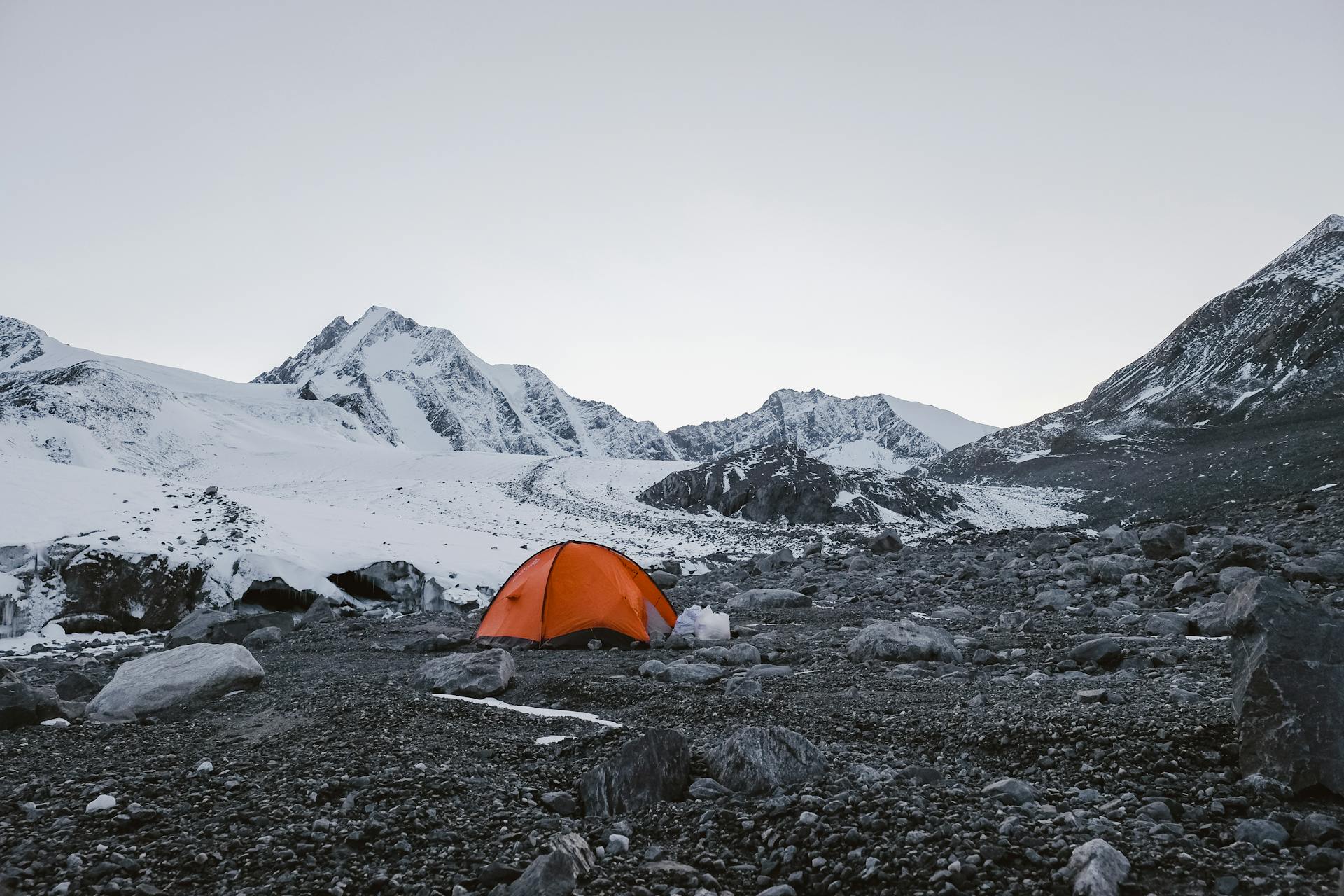Table of Contents
Camping is an adventure that brings you closer to nature, offering a refreshing break from the hustle and bustle of daily life. However, when you’re out in the wild, especially in windy conditions, setting up your tent can become a challenging task. Windy weather can make it harder to pitch a tent, causing instability and frustration. But don’t worry! With the right techniques and preparation, you can set up a tent in windy conditions with confidence and ease.
In this article, we’ll guide you through a step-by-step process on how to set up a tent in windy conditions and share tips to ensure that your tent remains secure and comfortable no matter how strong the gusts are.
When Is Putting Up a Tent Unsafe in the Wind?
While camping is about embracing the great outdoors, there are times when the weather makes setting up camp unsafe. Windy conditions, in particular, can turn an enjoyable experience into a dangerous one if proper precautions aren’t taken. Here are some key indicators that it may be too unsafe to put up a tent:
| Condition | Description | Why It’s Unsafe |
|---|---|---|
| Wind Speeds Exceed 30-40 mph | Most camping tents are designed for moderate winds. Gusts over 30-40 mph increase the risk of tent poles snapping, stakes dislodging, and the tent collapsing or blowing away. | High winds can damage your tent and pose a risk of injury. |
| Flying Debris in the Area | Branches breaking off trees, dust clouds forming, or objects being blown around indicate hazardous conditions. | Flying debris can cause injuries and damage your tent. |
| Unstable Ground or Shelter | Rocky or sandy ground may not hold stakes securely. Setting up near dead trees (widowmakers) or unstable rock formations adds further danger. | Weak anchor points and falling debris increase accident risks. |
| Diminished Visibility and Control | Difficulty standing, moving, or handling gear due to wind indicates unsafe conditions for tent setup. | Reduced control can lead to setup mistakes or accidents. |
| Severe Weather Warnings | Check weather forecasts for high wind or storm warnings before heading out. If severe weather is expected, avoid setting up camp until conditions improve. | Severe conditions pose a direct risk to safety and camping gear. |
Guidelines for Safely Setting Up a Tent in Wind
1. Choose the Right Tent for Windy Conditions
Before heading out, one of the most crucial factors is selecting the right tent for windy conditions. Not all tents are designed to handle strong winds, and choosing the right one can make a huge difference.
- Four-season tents: These tents are specifically designed for extreme weather conditions, including wind, snow, and rain. They are built with stronger frames and materials to withstand gusty winds.
- Geodesic or semi-geodesic tents: These tents have a more stable frame structure with multiple poles crossing each other, making them resistant to wind. The extra support makes them better suited for windy environments.
- Low-profile tents: A lower profile reduces wind resistance, making them less likely to get blown over. Tents with a compact design and minimal height are ideal for windy conditions.
If you’re planning to camp in an area prone to high winds, investing in a sturdy, wind-resistant tent is worth it. However, even if you’re using a standard tent, there are ways to secure it in windy conditions.
2. Pick the Right Campsite Location
Choosing a good campsite can be just as important as knowing how to set up a tent in windy conditions. The terrain and surroundings play a big role in keeping your tent stable.
- Avoid exposed areas: Set up your tent in a location that is sheltered from the wind. Avoid high ridges, open fields, and hilltops, as these areas experience more wind.
- Look for natural windbreaks: Try to pitch your tent near natural barriers like boulders, large trees, or hills. These features will block the wind and provide additional protection for your tent.
- Choose flat ground: A level, stable surface will help your tent remain secure and prevent it from shifting during high winds.
If possible, aim to set up your tent behind a natural windbreak. Even a low wall of rocks or a few sturdy shrubs can make a difference in reducing wind exposure.
3. Use the Right Tent Stakes
Tent stakes are essential for keeping your tent anchored in windy conditions. Standard stakes may not hold up against strong winds, so it’s important to use the right ones.
- Longer, heavier stakes: Long, heavy-duty stakes are ideal for windy weather. These stakes have more surface area to anchor your tent into the ground and prevent it from being uprooted. Aluminum or steel stakes are often better than lightweight plastic ones in windy conditions.
- Sand or snow stakes: If you’re camping on sand or snow, specialized stakes designed for these environments can improve your tent’s stability. Sand or snow stakes have a wider surface area and can anchor your tent better in loose, soft soil or snow.
- Rebar or screw stakes: For extremely windy conditions, consider using rebar stakes or screw-in stakes. These can be twisted into the ground, creating a deeper and stronger anchor point for your tent.
Make sure to use the appropriate stakes for the type of ground you’re camping on. Without secure stakes, your tent will struggle to stay in place, no matter how well it’s set up.
Read More: How to Prepare for Tent Camping in the Desert
4. Secure Your Tent with Guy Lines
In windy conditions, guy lines (the additional ropes that help stabilize your tent) are crucial for keeping your tent grounded. They provide extra support and help distribute wind pressure evenly across the tent’s structure.
- Attach guy lines to all the guy-out points: These are usually located on the corners or the sides of the tent. It’s important to use all the available guy line points to keep the tent secure.
- Use adjustable guy lines: Adjustable guy lines allow you to tighten or loosen them as needed. This flexibility is helpful when dealing with changing wind conditions throughout the day.
- Anchor guy lines properly: When securing the guy lines, use strong anchors like rocks, logs, or specialized tent stakes. Make sure the lines are taut but not too tight, as this can cause unnecessary stress on the tent fabric and poles.
By adding guy lines to all available points, you distribute the pressure from the wind across the entire tent, preventing certain areas from being over-stressed.
5. Pitch the Tent with the Wind Direction in Mind
Knowing how to orient your tent can significantly affect its stability. By positioning it correctly, you can reduce wind resistance and improve overall performance.
- Face the tent’s narrowest side into the wind: If you can, try to position the narrowest side of the tent facing directly into the wind. This reduces the amount of surface area the wind hits, making your tent less likely to be blown over.
- Avoid positioning the door directly into the wind: While you want the narrowest side facing the wind, avoid placing the entrance directly into it. The door can catch the wind and make it difficult to get in and out of your tent.
- Ensure the tent’s poles are aligned with the wind: If your tent has a front and back, align the poles so that they run perpendicular to the prevailing wind. This ensures the tent is aligned to handle the wind pressure better.
Setting your tent up with the wind direction in mind helps it handle the forces of nature more effectively and reduces the chances of it becoming destabilized.
6. Set Up the Tent in Stages
Setting up a tent in windy conditions can be tricky, and trying to complete it all in one go can lead to frustration. Instead, break the process down into manageable steps:
- Lay out the tent fabric: Spread the tent floor on the ground and secure it using heavy objects or partially pegging it with stakes to hold it in place.
- Assemble the poles: Construct the poles and place them into their corresponding sleeves or clips. Have a partner hold the poles in place if needed to prevent them from being blown around.
- Erect the tent: With the poles assembled, raise the tent. It may help to start with the corners and then move to the other sides. If you’re camping solo, it’s helpful to tie down one side before continuing with the other sides.
- Secure with stakes: Once the tent is upright, go around and secure all corners with strong stakes. Tighten the guy lines to further stabilize the structure.
By taking the process step by step, you reduce the risk of your tent being blown away during the setup process.
7. Reinforce Tent with Extra Weight
Sometimes, the best way to ensure your tent stays in place is to add extra weight. While guy lines and stakes do a lot of the work, additional weight can help keep your tent grounded.
- Use heavy rocks: If you’re camping in a rocky area, you can place heavy rocks along the edges of the tent’s base to hold it down. Ensure they’re spread out evenly to avoid one side from bearing all the weight.
- Fill sandbags: If you’re camping in a desert or on a sandy beach, filling sandbags can help hold your tent in place. Many camping stores sell portable sandbags that you can use as additional anchors.
Having some extra weight can make all the difference in ensuring your tent doesn’t take off in strong winds.
8. Regularly Check Tent for Stability
After you’ve set up your tent, don’t forget to check it periodically throughout your stay, especially during high winds. Ensure that all guy lines are taut and that the stakes are still firmly in the ground. Wind conditions can change, so it’s important to make sure your tent remains stable at all times.
Conclusion
Knowing how to set up a tent in windy conditions is a vital skill for any camper. By choosing the right tent, picking a sheltered location, using proper stakes and guy lines, and pitching your tent with the wind in mind, you can stay safe and comfortable while enjoying the outdoors. Windy conditions may present challenges, but with a little preparation and the right techniques, you can secure your tent and make your camping experience a memorable one. So the next time the wind picks up, you’ll be ready to face it head-on. Happy tent camping!

